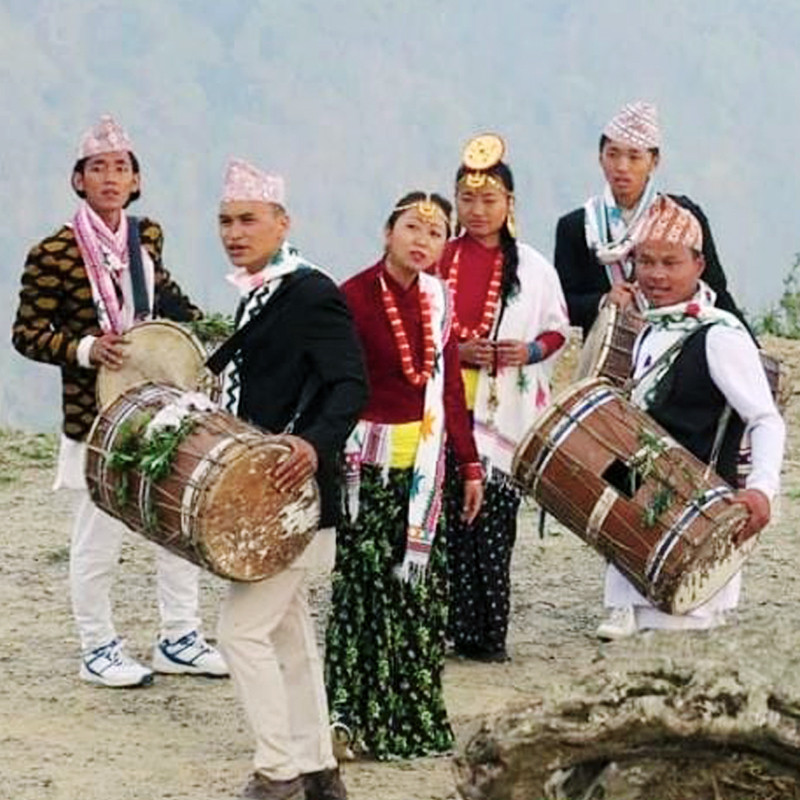Udhauli Parva - A Festival Thanking Mother Nature for Good Harvest
Udhauli parva is an important festival of the Kirati people. Kirata originally are known to reside in the eastern hilly regions of Nepal. “Kirat” means “lion-hearted people” or “people of a lion nature”. It also means mountain people. The word Kirata is a derivation from Kirati or Kiranti to name the group of people in Eastern Nepal.
Kirat ("Kiranti") are ancient people who have been associated with the history of Nepal for thousands of years. According to the history of Nepal, the Kirats ruled for about 1,225 years (800 BC–300 AD). Their reign had 29 kings.
Celebration of Udhauli Parva
The kirati people celebrate the Udhauli festival to commemorate the good harvest giving thanks to Mother Nature. Limbu and Yakka people also celebrate this festival thus marking the arrival of the winter season.
It falls in the month of Mangsir on a full moon night symbolic of the start of the cold season. The festival also has a mention in the holy book called “Mundhum” of the Kirati people. “Udhauli” in actual terms means “downwards”. It also showcases the migration of birds and animals to lower altitudes as winter approaches.
In the olden times, the kirati people followed the movements of nature and moved to lower altitude regions as hilly terrain would be cold. This migration would take place on a full moon in the month of Mangsir which is the eighth lunar month. It takes place in the month of November and December as per the English Calendar. This downward migration called Udhauli would be followed by the upward movement of Ubhauli after five months.
Kirats worship nature and agriculture, as such it is one of the important festivals of their community which is celebrated with grandeur and fanfare.

Mythology Behind the Festival
According to Kirat mythology, Paruhang (God) who used to live in the heavens saw beautiful Sumnima (Goddess) on earth and fell in love with her. He gifted her a beautiful comb and proposed to her for marriage. The marriage of heaven and earth was thus made. Four children were born out of this wedlock. But one-day Paruhang left Sumnima and did not return. Time went by but Sumnima waited for her husband to return. One day while Sumnima was in the forest searching for food for her children she found a creeper plant. On tasting this plant she realized that it gave power, strength, happiness and made people speak the truth.
On seeing this she made a buti (religious charm/Talisman) out of it and a lot of people benefited from this. Finally, when Paruhang returned, she made him wear the buti which made Paruhang also very happy and started telling her the truth about his time in Heaven and earth atop the Chomolungma (Mt Everest). He had meditated and visited the entire universe. He then promised her that he would never leave her again to which Sumnima danced with joy- “the Sakela dance”. Therefore this dance is associated with finding love where young boys and girls participate to find each other.
Rituals of Celebration
The festival is started with Chula puja (a fireplace exclusively kept for the Kul). The Puja is performed by Kirati Rai priest Nakchhong. After chula puja, nakchhong performs a sacrificial rite (usually with chicken) over a sacred place known as “Sakela thaan”, which is usually under a sacred tree. The Nakchhong signals the completion of the puja by starting the dance himself or herself. After this, the celebratory Sakela Naach is started.
Thus the focal point of the celebration is a special Sakela dance to the music of traditional instruments like Dhol, Jhyamta, Baja, etc. The charm of this dance is that it is performed by people of all ages together in a large circle. It is a pure form of dance where hands are held and danced irrespective of the relations and age while dancing in a circle. There are male and female leaders in each circle known as Silimangpa and Silimangma respectively. All the dancers follow the lead of lead dancers which is called Sili.
Beautiful kirati women dance the Sakela Naach wearing ethnic guneu - called chhit ko guneu ordaining their traditional jewelers like shir phol, Sirbandi, chimpti, jun (moon) clip, Phuli, Bulaki, Tilahari, Pote, chandrahar, company har, kalli, etc. Men dance with their traditional wear Daura Suruwal with pheta (white cloth turban) on their head and some adorn it with feathers carrying traditional weapon khukuri and bow and arrow.
This festival is celebrated by kirats all over Nepal. Despite the fact, traditional migration may no longer be done with urbanization and settlement in urban settings, the festival is celebrated with great zeal and enthusiasm.
Celebrated By Hindu as Kul Puja
This day is also celebrated by Hindus as Kul Puja worshipping their ancestors and the cowshed. They celebrate the festivals by stocking new grains and making an offering to the God and Goddesses to ensure a plentiful supply of grains throughout the year. Thus marking the end of the rice harvest season throughout the country.
